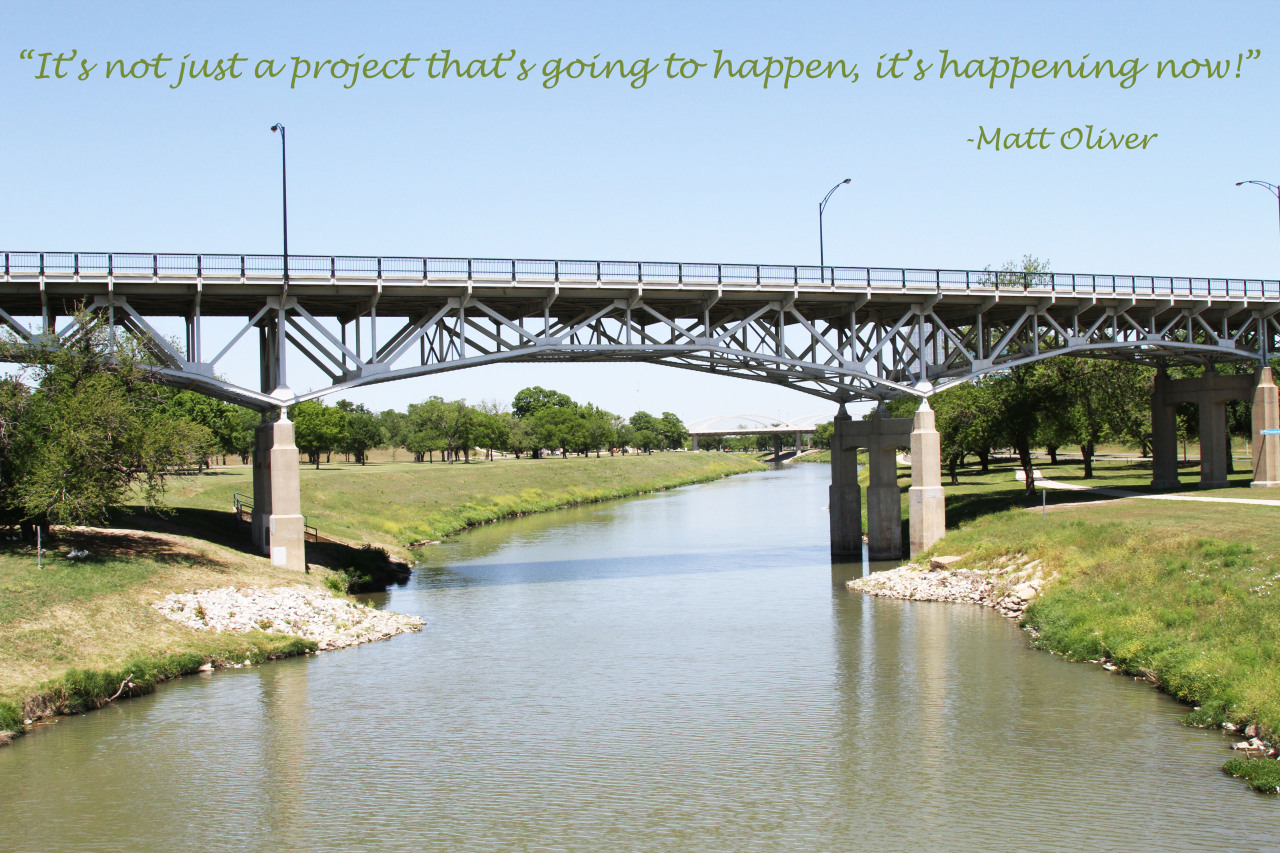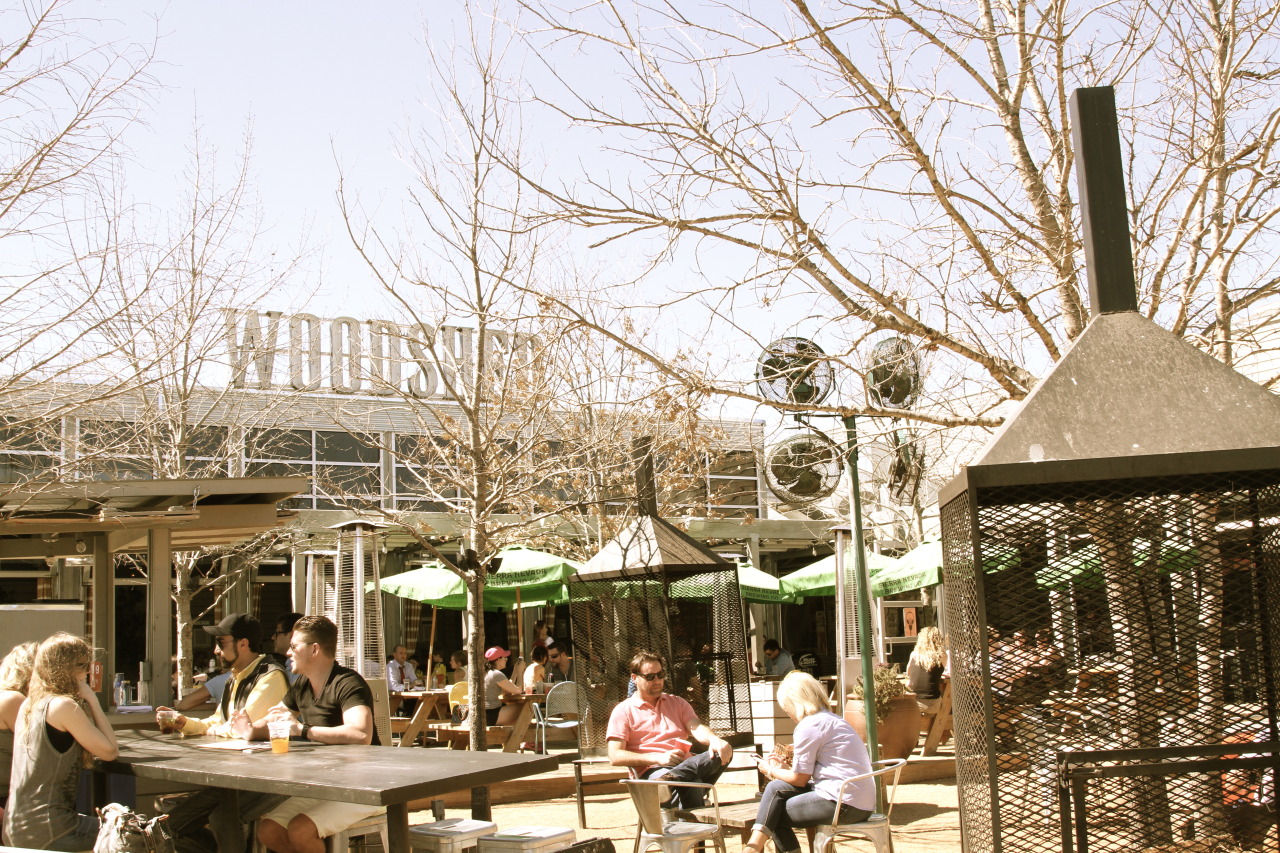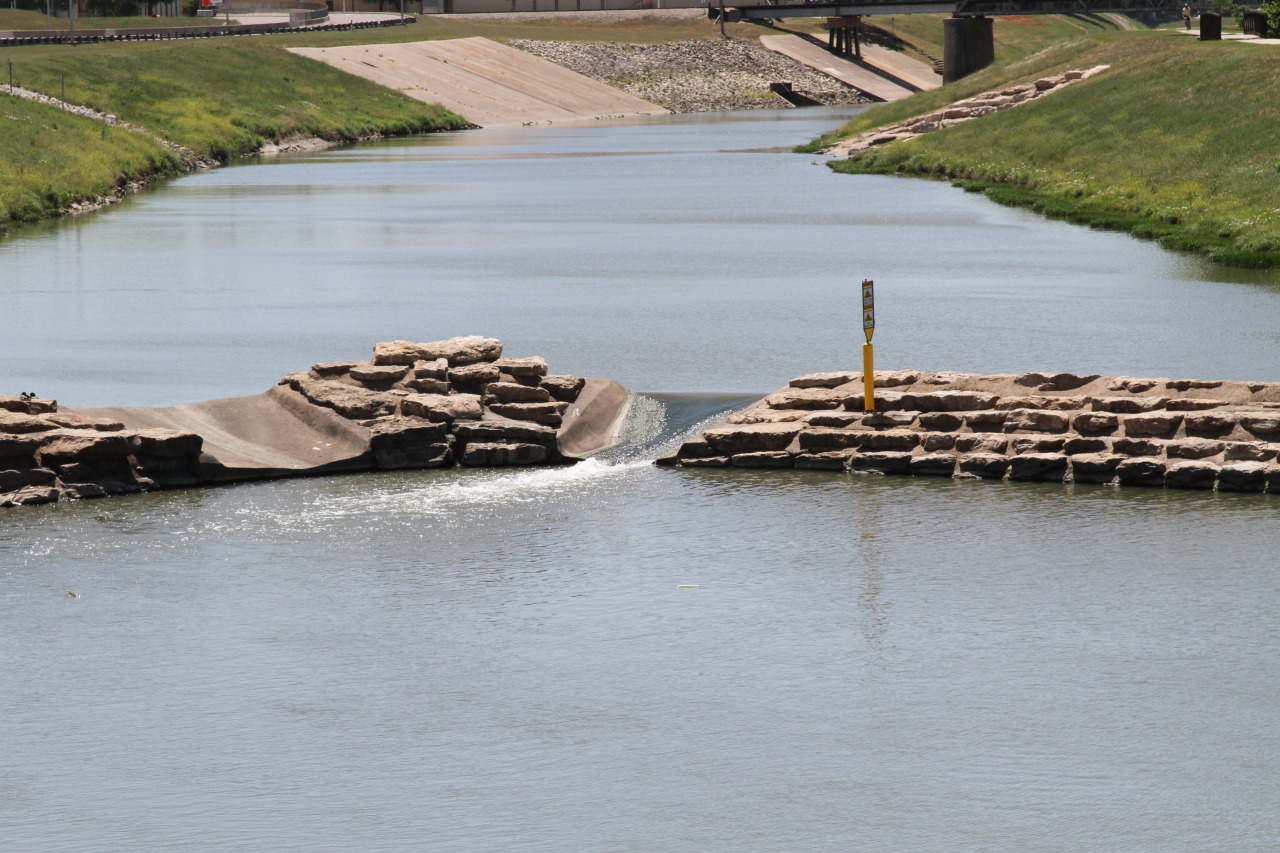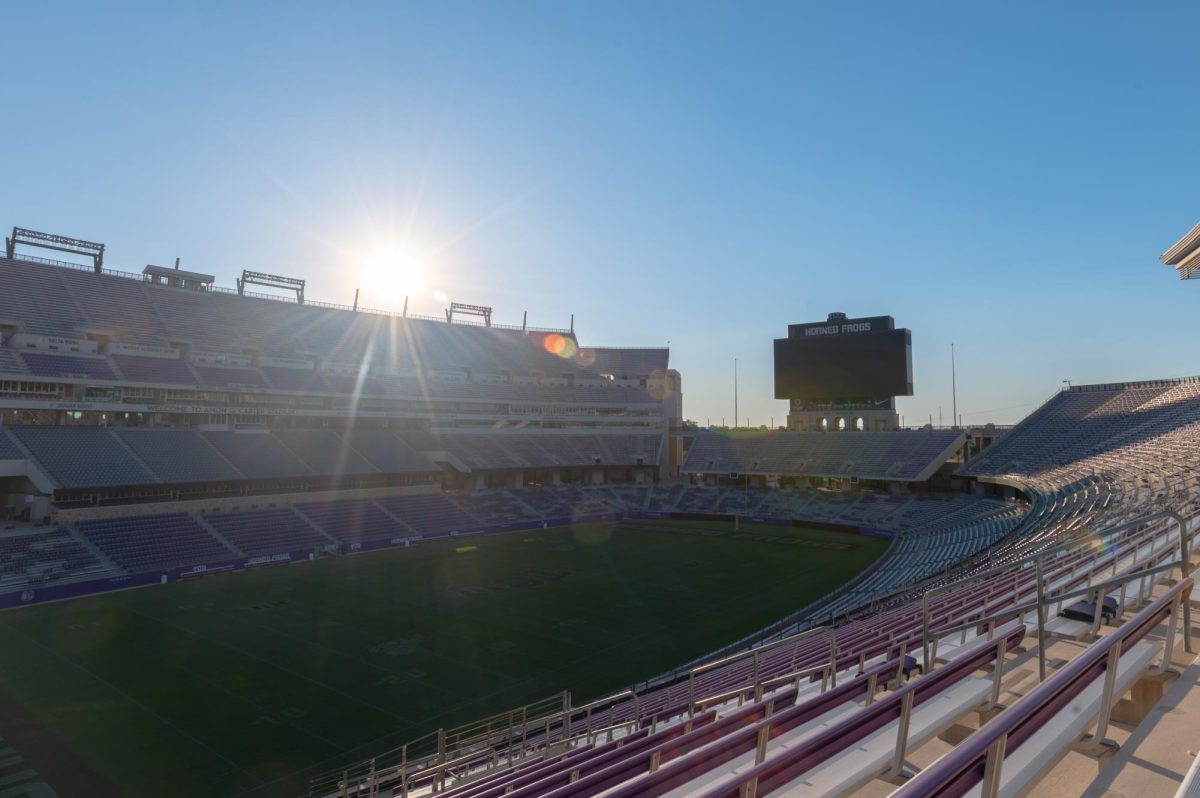
For most of the past nine years, the Trinity River Vision has been just a vision. But for the people behind the scenes, it’s a $909 million project making it the largest makeover the city of Fort Worth has ever attempted.
The master plan incorporates 88 miles of the Trinity River and focuses on eight segments of the river and its tributaries: Clear Fork North, Clear Fork South, Marine Creek, Sycamore Creek, West Fork East, West Fork West and the Central City area now called Panther Island.
According to the organization’s website, it will create a vibrant, pedestrian-oriented urban waterfront neighborhood adjacent to Downtown Fort Worth, expand Gateway Park into one of the largest urban-programmed parks in the nation and enhance the river corridor with more than 90 user-requested projects along the Trinity Trails.
The projects funding comes from many sources; $422 million local dollars is targeted for Trinity Uptown, with $320 million aimed to come from the Trinity River Vision Tax (TIF) District. In addition to TIF money, Fort Worth gave $26.6 million, Tarrant County gave $11 million, and Tarrant County Water District provided $64.4 million.
The federal money includes $10 million for economic and housing development. But the largest piece is budgeted by the Army Corps of Engineers — $411.6 million.
The Trinity River flows through the city of Fort Worth and has meant many things for the citizens who reside here.
“The river flows majestically through the city,” said Don Woodard, a Fort Worth native. “I walk by Heritage Park all the time.”
Heritage Park sits on the natural bluff to the Trinity River and extends to the rivers edge. The famous Heritage Plaza is a signature architectural element built near the site of the original military outpost that gave the city its name.
The river was discovered when the U.S. Army established the city of Fort Worth in 1849.
“[Streams and Valleys, Inc.] was a grassroots group of women put together to do something about this river that everyone turned their back on,” said Matt Oliver, Trinity River Vision Authority spokesman.
Streams and Valleys partners with the Trinity River Vision Authority along with other local partners, the city of Fort Worth, Tarrant County, and Tarrant County Water District to manage and coordinate the project.
“Overall, the citizens overwhelmingly support the Trinity River and its amenities,” said Betsy Price, Mayor of Fort Worth. “But there have been a handful of people who have opposed it.”
The bridges being built on North Main, White Settlement Road and Henderson Street span over dry land, and that concerns some residents.
“All my life I’ve known about the confluence where Ripley Arnold built this fort,” Don Woodard Sr. said.
“And what are they going to do?” he asked. “They’re going to build a little stock pond, a 33-acre lake that is going to cover up that confluence, Fort Worth’s premiere landmark.”
Woodard said building three bridges of dry land would make Fort Worth the laughing stock of the world.
His wife, Wanda, agrees. “The problem is the people have never had a voice,” said Wanda Woodard. “The people never had the opportunity to vote on it. This is against the Constitution.”
The mayor worked with Streams and Valleys, Inc. developing the river and its tributaries before she became the city’s leader.
“It focuses on flood control,” Price said. “But it will change the face of Fort Worth and downtown too because it brings and makes the river usable for the average citizen.”
“It gives us a chance to have some new buildings, restaurants and opportunities for new trails,” she said. “People want to be outside, and they want to be on the river.”
This organization is responsible for the implementation of the Trinity River Vision (TRV) — a master plan for the Trinity River in Fort Worth.
It promotes planning elements such as building orientation to the river corridor, pedestrian corridors and encourages commuting on the Trinity Trails.
The trails extend through Fort Worth over 54 miles connecting major areas like the Stockyards, Downtown and the Cultural District.
The TRVA plays a role in the upcoming of seven new attractions walking distance to the river: The Yoga Place, Coyote Drive-In theatre, Woodshed Smokehouse, Martin House Brewing, Clearfork Food Park, Acme Brick Headquarters and Edwards Ranch Development.
“Woodshed is popular because it’s so close to the water and trail,” Oliver said. “Fort Worth doesn’t have anything else like it.”
“It’s things that are embracing the river,” Oliver said. “Were not just thinking about this, were doing it because people are seeing that this is what they want.”
“No matter what city you’re in, people want urban development — they’re running more, biking more, they’re on the rise in general,” Oliver said.
“The primary purpose of the project is to provide needed flood protection,” Oliver said. “It also adds new recreational amenities, improves infrastructure, provides environmental enhancements and programs events.”
“The ‘vision’ has always been to advocate for this natural resource, keeping the river beautiful, accessible, enjoyable, and productive,” Oliver said.
Gateway Park
The revitalization of Gateway Park is a component of the Central City portion of the Trinity River Vision.
The plan includes a major restoration of the parks ecosystem, provides numerous and diverse recreational amenities and provides the necessary flood storage to ensure the viability of the Central City flood control project.
“There’s already several ball fields, a dog park, and to bring in more amenities we will attract more people and of course the participation level will go up,” said Jerry McDowell, northeast district operations superintendent. “It will paint more awareness to the park.”
The plans are likely to spur positive economic development around the park, McDowell said. The project meets the needs of the community by connecting neighborhoods of east and southeast of Fort Worth to the Trinity River.
At just over 1,000 acres, Gateway Park will become the largest urbanized park.
“It will be some economic development,” Price said. “But it’s largely flood control and the access back to one of our beautiful natural resources on the Trinity.”
These additions and improvements are a direct result of community input gathered during a series of public meetings held throughout the city's master planning process.
“We basically went to public meetings waiting for anyone who would listen to us talk.” Oliver said.
Park-goers can expect the new and improved Gateway Park to be completely equipped with first-class recreational amenities.
Trinity Uptown – Panther Island
Several cities around the country have an “uptown” neighborhood — Fort Worth’s neighbor and sometimes rival, Dallas, is best known for its “uptown”.
For much of the past decade, authority officials working on the redevelopment of an 800-acre property north of Downtown Fort Worth have called it Trinity Uptown.
The name Trinity Uptown will change to Panther Island because Fort Worth is known as the “Panther City.” Developers and consultants working closely with the TRVA were used to test the name of Trinity Uptown.
“People seem to like the name Panther Island because it’s unique to Fort Worth,” Oliver said. “A lot of people hear uptown and think we’re copying Dallas. There are probably 20 or so cities that have that name — Also, the name Trinity Uptown says nothing about water.”
The Panther City signature dates to the 1870s, when Fort Worth leaders were still trying to lure a railroad to the town and suffering through a population decline.
The name comes from former Fort Worth lawyer, Robert E. Cowart, who pointed to the street in front of the courthouse and said, “That’s where a panther slept last night.” The lawyer wrote about the incident, explaining it as a humorous example of how deserted the streets had become.
Although there was no proof that a panther slept on the street, city leaders embraced the reference and began calling their town the Panther City.
“Panther Island aims to embrace the concept of urbanism,” said Jeni Bell, Trinity River Vision Authority media manager. “The city population is expected to increase by more than 50 percent in the next 20 years.”
According to the organizations website, the new infrastructure will offer 12 miles of active urban waterfront and a 33-acre lake just north of downtown, making the entire area attractive for private development and mixed-income living.
“Its goal is to create a stimulating locale, which individuals and families can live, work, shop, play — and learn,” Oliver said.
It promises to become a richly diverse urban neighborhood linking downtown to the Stockyards and Cultural District. The area is bound on the north by Northside Drive and the Oakwood Cemetery property, to the west by the Fort Worth & Western Railroad and Henderson Street corridor, to the east by Samuels Avenue and to the south by Belknap Street.
While Panther Island is in the stages of development, the publically funded Central City Project focuses on infrastructure improvements, environmental cleanup and flood protection.
“Panther Island could not happen without Central City developments,” Oliver said.
“A new bypass channel will replace an outdated levee system
is unable to accommodate the city's population growth,” he said. “This project will provide necessary flood protection, ecosystem improvements, new bridges and new or improved roads and trails.”
The public improvements virtually double the size of downtown.
“It’s a tremendous example of private-public partnerships,” said Price. “The energy with it is great, it’s truly going to change the face of Fort Worth making it a more open and vibrant and engaged city.”
It’s projected to generate more than $600 million in economic activity during the first decade alone.
Oliver said the tentative schedule is to finish the bulk of the work on the river and area roads, bridges and utilities by 2023 but one amenity in particular hopes to be complete in June.
The Panther Island Brewing Company, once known as Wahoo Brewing adopted the Panther Island name after locating to the urbanized living area.
The building is close to the Panther Island Pavilion, an outdoor entertainment area on the banks of the Trinity River across from Downtown Fort Worth.
“The development by the TRVA will definitely help our business,” said Ryan McWhorter, co-owner of the brewing company. “We have worked very closely with J.D. Granger, and they’ve been great.”
The co-owners of the brewery believe that Panther Island represents what they’re all about; great times, great music, and great people.
“I think we will be able to grow along with [the TRVA],” said Michael Harper, co-owner of the brewery. “Honestly, beer and hanging out on the river is a match made in heaven.”
For more pictures on the Trinity River renovations click this link: http://acyanceyposts.tumblr.com



